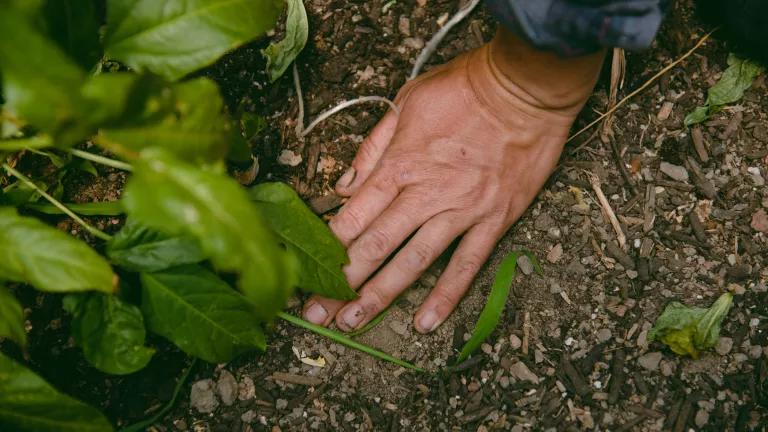Regenerative Agriculture
Farming in harmony with nature fights climate change, improves water quality, and protects biodiversity. NRDC works with growers, ranchers, and community leaders to craft policies for a regenerative farm and food system.

Today’s industrial agriculture system extracts from the land without replenishing, exploits people, animals, and natural resources, and is a major contributor to climate change; 10 percent of U.S. greenhouse gas emissions currently come from agriculture. Rooted in Indigenous wisdom, regenerative farming is an alternative decision-making framework that offers a set of principles and practices to grow food in harmony with nature and heal the land from degradation. The regenerative principles include farming and ranching with an understanding of the land’s natural resource availability, building and prioritizing soil health, reducing and eventually eliminating the use of harmful chemicals, integrating animals onto agricultural land, and nurturing strong relationships with communities.
NRDC interviewed farmers and ranchers across the country to better understand regenerative agriculture. The farmers we interviewed taught us how regenerative agriculture’s decision-making framework, its principles, and practices can help transition agriculture into a climate solution. They also shared challenges that may prevent more acres in the United States from being managed regeneratively. Importantly, they suggested that current agricultural policy did not always work well for their operations.
Policy plays an important role in shaping the agricultural landscape. The United States spends billions of dollars on programs, grants, subsidies, and incentives to support the food system. For example, the Federal Crop Insurance Program, which is regulated and funded through the Farm Bill, covers upwards of 90 percent of U.S. cropland acres, showing the reach of federal policy. Inspired by what our 100+ interviewees told us, NRDC identified potential policy solutions to help spur on the transition to regenerative agriculture in the United States, including:
- Leveling the federal investment playing field and incentivizing regenerative stewardship. Reform federal policies that created today’s dominant industrial agriculture model to instead promote and reward regenerative agriculture.
- Investing in more decentralized and diverse food systems infrastructure. Build the infrastructure that creates additional market and operational capacity for regenerative growers.
- Supporting regenerative farmers and ranchers. Increase support for farmers and ranchers during their beginning or transitioning years, break barriers for BIPOC growers to access federal programs, and revive the civilian conservation corps to expand conservation on private lands.
- Funding regenerative agriculture research and extension. Improve the technical resources offered through extension and public research institutions to meet the needs of regenerative farmers and ranchers.
Every person has an important part to play in our food system: From visiting a farm or a ranch and getting to know the people who grow your food, to asking your local supermarket to buy from local farmers, to calling elected leaders and advocating for policy changes, there are plenty of ways we can all help transition our agricultural system toward a regenerative one that fights the climate crisis.





